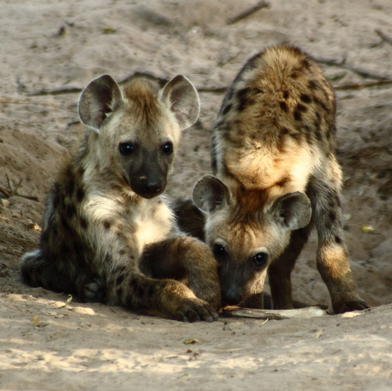Social Dominance in Spotted Hyenas
Biology 342 Fall 2015
Elaine Kushkowski & Duncan Herb
Adaptive Value
Sexual Dimorphism
In many mammals, a major aspect of the species’ sexual dimorphism is the tendency of male individuals to be significantly larger than the females. This is not the case in the spotted hyena. Female spotted hyena are consistently larger than male, as well as more stronger and more aggressive, both socially and during feeding. It is likely that this trait developed to facilitate mother hyenas being able to feed their young more consistently and effectively, with the more aggressive females scaring off the males, freeing up more of the kill for their offspring. With the higher-ranking females having greater access to food resources, the offspring of the higher ranking females also grow larger, maintaining the hierarchy as well as the dominance of the matriline (Holekamp, 2015).

Figure 1. Young hyenas rely on their large, aggressive mothers for food an protection.
Fission-Fusion
The spotted hyena’s hierarchy is compounded by the fission-fusion mechanism by which they organize their time, with the clan dividing into smaller groups and then reforming, so as to spread out the individuals during foraging so as not to overload a single food source (Smith, 2011). The fission-fusion system allows the group to separate when the cost of being in a large group is high and rejoin when there is a benefit to being in a large group. Fission also acts as way to reduce conflict between closely ranked females.